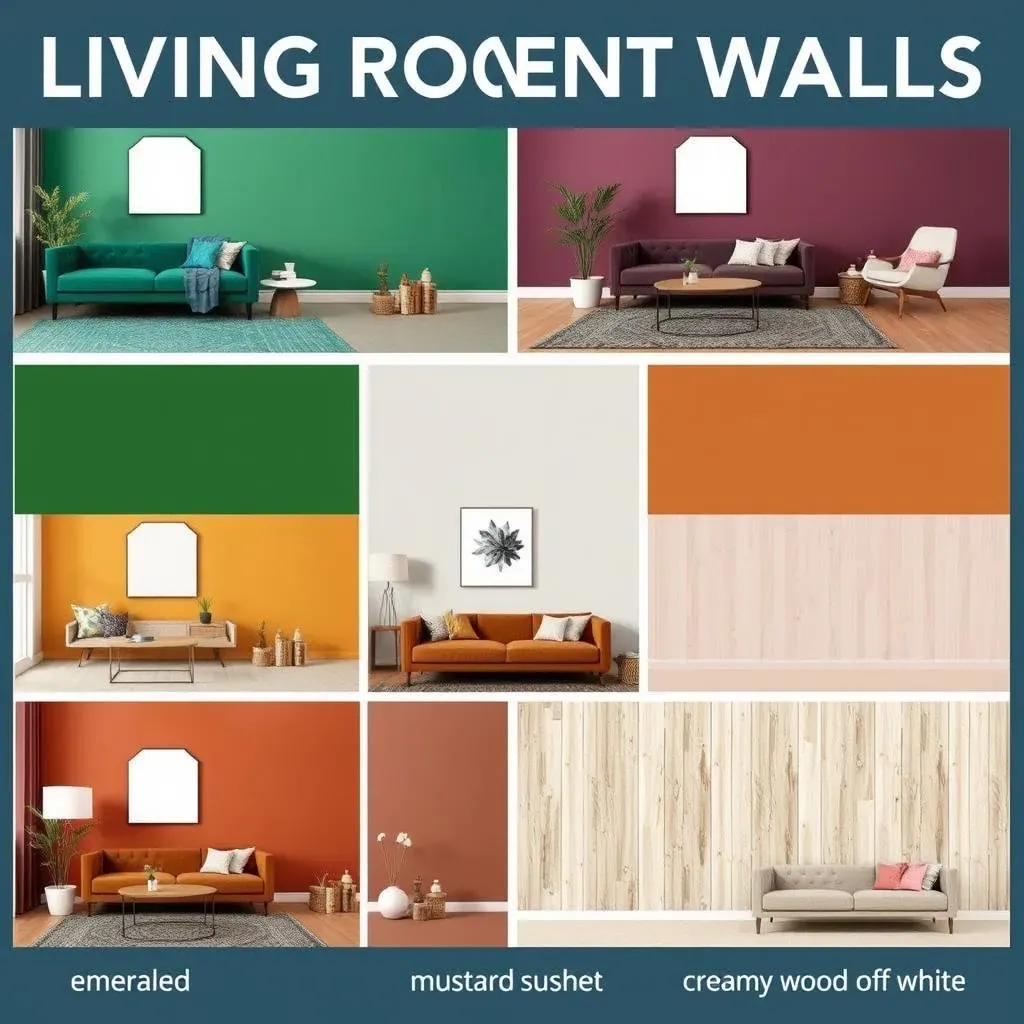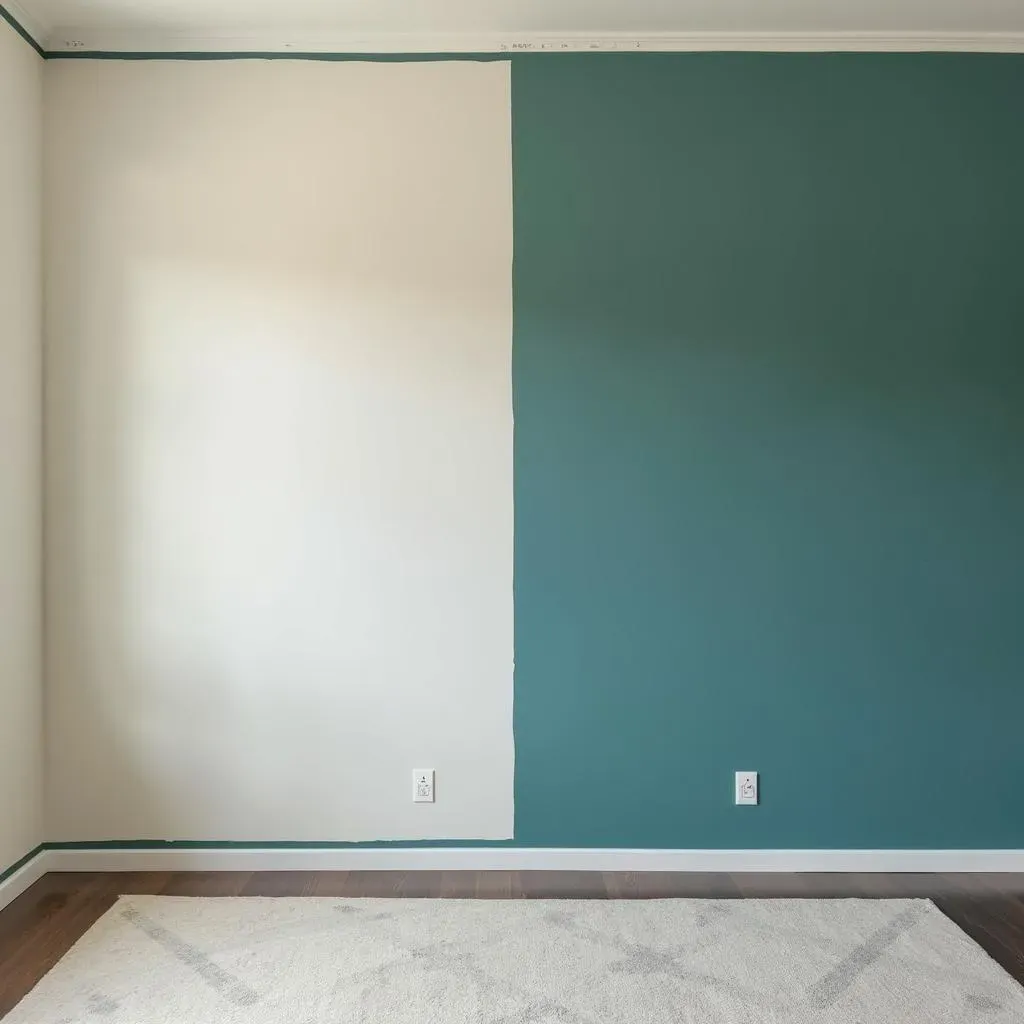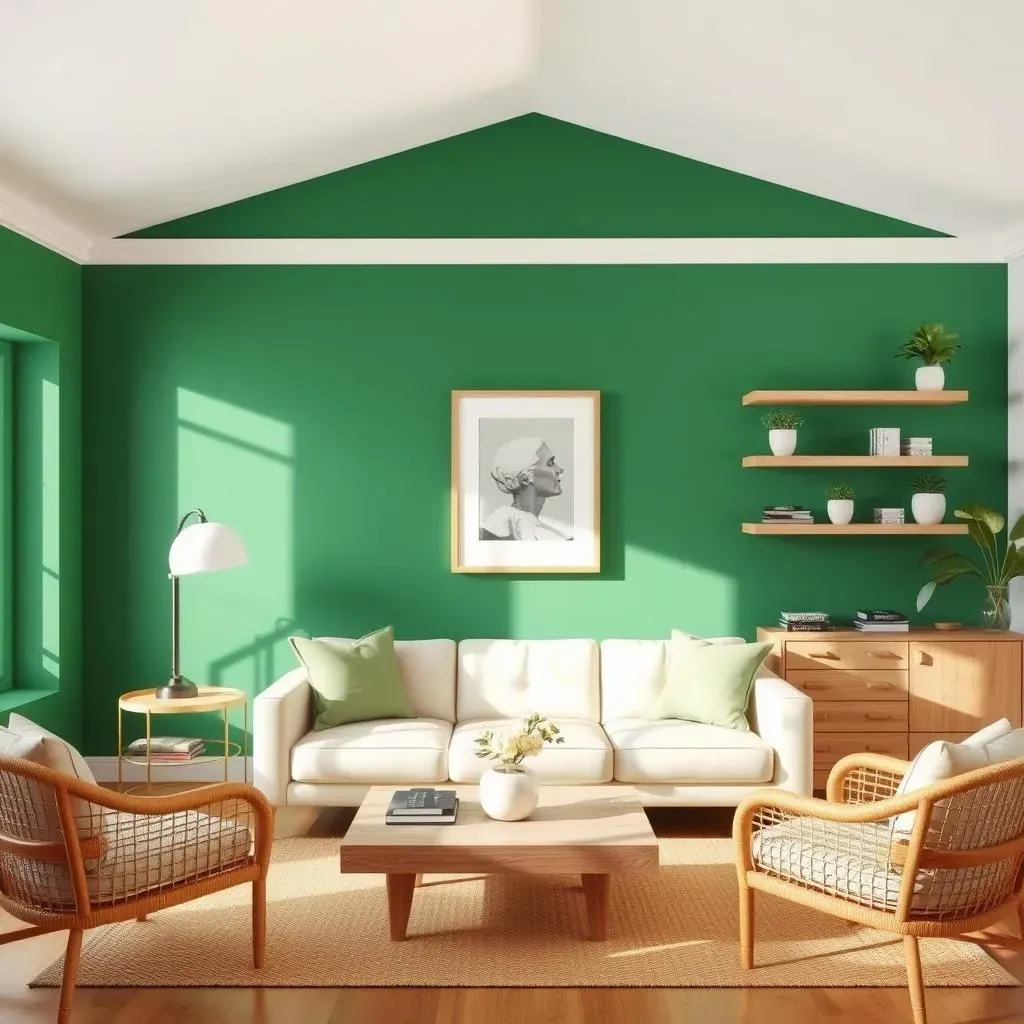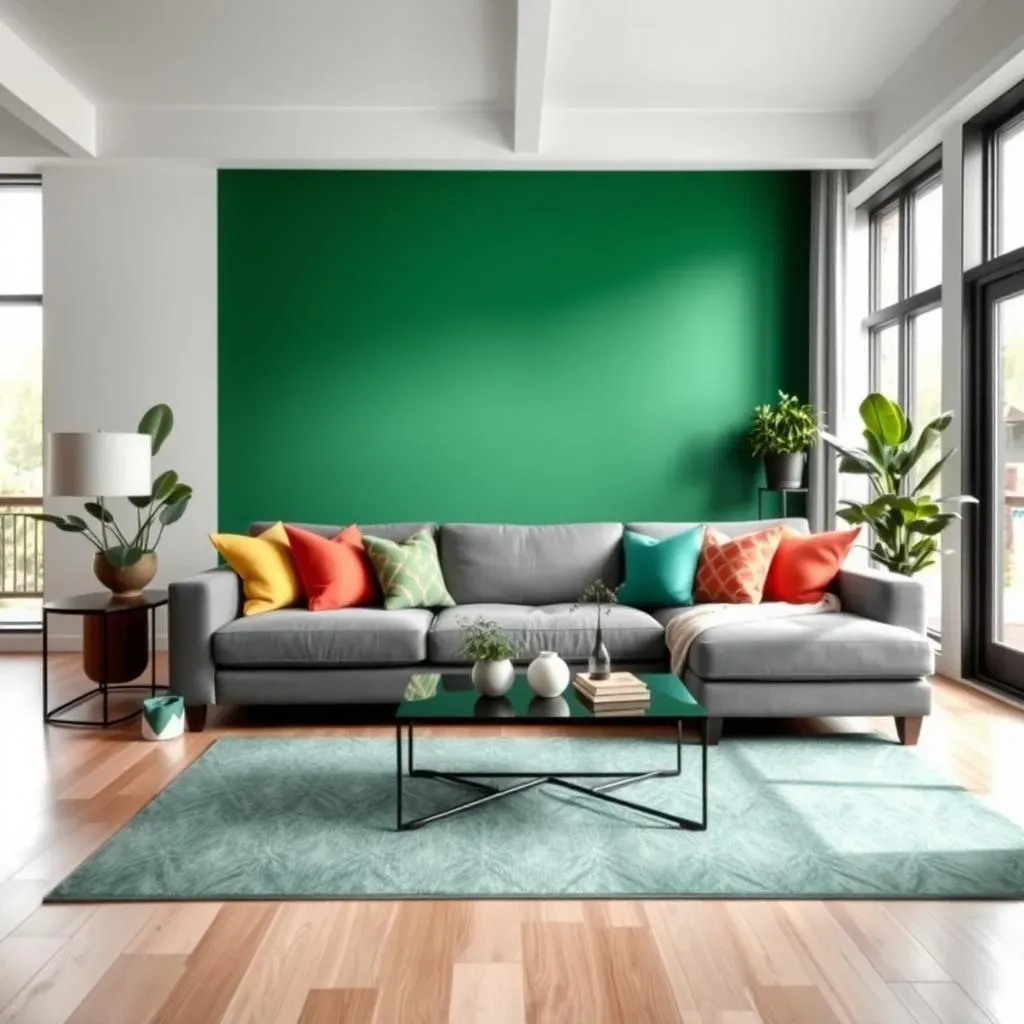Table of Contents
Ever feel like your living room is missing that certain *something*? Maybe it's feeling a bit bland or just needs a refresh? Well, you're not alone! A splash of color, a dash of texture, and a whole lot of personality can be achieved with one simple trick: a paint accent wall. This isn't about just slapping some paint on a wall; it's about creating a focal point that reflects your style and brings the entire room together. We're talking about transforming your space from "meh" to "wow" using the magic of carefully chosen colors and techniques. In this article, we'll be your guide, navigating the world of living room paint accent wall ideas. We will show you how to select the perfect wall, choose colors that pop, and even give you some DIY tips so you can tackle this project yourself. Get ready to discover how a single wall can make a huge difference!
Choosing the Right Wall for Your Living Room Accent

Choosing the Right Wall for Your Living Room Accent
Okay, so you're itching to create an accent wall, that's awesome! But before you grab a brush, let's chat about picking the *right* wall. It’s not just about the biggest wall, or the one that’s easiest to reach, it's about strategy. Think about the room's natural focal point. What do your eyes naturally land on when you walk in? Is it the fireplace? A large window? Or maybe a built-in bookshelf? That's a solid contender for an accent wall. You want to choose a wall that will make a statement, not one that's just kinda… there. Also, consider the room's architecture. Sometimes a wall with unique features, like an alcove, or a wall without windows, can make for a far more interesting accent wall choice.
Think about light, too. A darker color on a wall that gets a lot of natural light can look amazing, creating depth, while the same color in a dim corner might make that area feel smaller and even cave-like. So, before you commit, spend some time just observing your room. See how the light changes throughout the day, and pay attention to where your eye is naturally drawn. Don’t just pick a wall because it’s the first one you see; select it because it's the wall that will truly enhance your living space. It's like choosing the right spot for a painting; it should complement the room, not clash with it.
Consideration | Why it Matters |
|---|---|
Natural Focal Point | Draws attention and enhances existing features. |
Room Architecture | Unique walls add character and visual interest. |
Light Exposure | Affects how the paint color appears and the overall mood. |
Living Room Paint Color Ideas for Accent Walls

Living Room Paint Color Ideas for Accent Walls
Bold and Beautiful: Making a Statement
Alright, now for the fun part: picking colors! When it comes to accent walls, don't be afraid to go bold. Think deep jewel tones like emerald green, sapphire blue, or even a rich, velvety plum. These colors can add instant drama and sophistication to your living room. A dark, saturated hue on one wall can make the entire space feel more luxurious and intentional. I once painted an accent wall in my own living room a deep teal, and it completely transformed the vibe. It went from feeling like a basic, boring box to a cozy, stylish haven. It was a risk, but it paid off big time!
But, if you're not feeling that adventurous, that's totally fine. You can still make a statement with a slightly softer approach. Consider a warm terracotta, a muted mustard yellow, or even a dusty rose. These colors bring warmth and personality to a room without being too overwhelming. They can also work beautifully with a wide range of furniture styles and decor. The key is to pick a color that you love and that complements the overall style of your living room. Don't just choose a color because it's trendy; choose one that speaks to you.
Neutrals with a Twist: Subtle Yet Striking
Okay, so maybe bold isn't your jam, and that's totally cool. You can absolutely create a stunning accent wall using neutrals, but with a twist. Instead of just plain white or beige, consider a warm gray with subtle undertones of green or blue, or a creamy off-white with a hint of pink. These nuanced neutrals add depth and sophistication without being too loud. They're also incredibly versatile, acting as a beautiful backdrop for your furniture and artwork. I had a friend who used a light greige on her accent wall and it made her art pieces pop. It was subtle, but made a huge difference.
Color Category | Color Ideas | Mood |
|---|---|---|
Bold | Emerald Green, Sapphire Blue, Plum | Dramatic, Sophisticated, Luxurious |
Warm | Terracotta, Mustard Yellow, Dusty Rose | Cozy, Inviting, Personality |
Neutral with Twist | Warm Gray, Creamy Off-White | Versatile, Sophisticated, Subtle |
Playing with Texture: Beyond Flat Paint
Don't forget that accent walls don't have to be *just* about color. You can also add visual interest by playing with texture. Consider using a textured paint, like a suede or a faux concrete finish. Or, think outside the box and use materials like wood paneling or even wallpaper to create a unique accent wall. These textured elements can add depth and dimension to your living room, making it feel more dynamic and visually appealing. I once saw a living room with a shiplap accent wall painted a soft white, and it was just absolutely stunning, simple yet impactful.
DIY Living Room Accent Wall Techniques and Tips

DIY Living Room Accent Wall Techniques and Tips
Prep Like a Pro: The Foundation for Success
Alright, so you've got your wall and your color picked out, awesome! But hold up, before you start painting, let's talk prep. This is the unglamorous part, but trust me, it's where the magic really happens. Start by cleaning your wall. I mean *really* cleaning it. Dust, cobwebs, greasy fingerprints – they all need to go. Use a damp cloth or sponge with some mild soap and water, and let it dry completely. Next, grab some painter's tape and carefully tape off all the edges, trim, and anything else you don't want to get paint on. Take your time here, because a crisp line is the key to a professional-looking accent wall. Think of it as building a solid foundation for a house; if it's shaky, the whole thing will fall apart.
Once you have all your edges taped off, examine the wall for any imperfections. Small holes from nails or screws? Patch them up with some spackle and let it dry. Any rough spots? Give them a light sanding. These little steps will make a huge difference in the final result. It's like ironing your clothes before a big event; it just makes everything look so much better. And finally, before opening your paint can, make sure to lay down drop cloths to protect your floors and furniture. Trust me, future you will thank you for this step!
Prep Step | Why It's Important |
|---|---|
Clean the Wall | Removes dirt and grease, ensuring better paint adhesion. |
Tape Off Edges | Creates crisp, clean lines for a professional look. |
Patch and Sand Imperfections | Ensures a smooth, even surface for painting. |
Lay Drop Cloths | Protects floors and furniture from paint splatters. |
Painting Techniques: Achieving a Flawless Finish
Okay, the wall is prepped, the tape is on, and the drop cloths are down—time to actually paint! Now, you might be tempted to just slap the paint on, but let's take it slow and do it right. Start by cutting in. This means using a brush to paint a 2-3 inch border along the edges and corners. This gives you a nice, clean line and prevents the roller from smudging paint into the corners. I like to use a good quality angled brush for this, it gives me more control. After cutting in, grab your roller and start painting the rest of the wall in smooth, even strokes. Don't overload the roller with paint, or it will drip and make a mess. Apply two thin coats instead of one thick one, letting the first coat dry completely before applying the second. This ensures an even color and prevents peeling.
When you are painting, you want to work in sections. Don't try to paint the entire wall at once. Instead, work in smaller areas, making sure to overlap each stroke slightly. This prevents streaks and ensures consistent coverage. And don’t forget to feather the edges of each section as you go, this will help blend everything together seamlessly. Once you’ve finished, carefully peel off the painter’s tape while the paint is still slightly wet. This will prevent the paint from pulling up with the tape. And there you have it: a beautifully painted accent wall, all thanks to your DIY skills!
Beyond the Brush: Creative Wall Finishes
So you've got the basic painting down, but what if you want something a little more unique? Well, there are tons of cool techniques you can try. For example, you can create a faux concrete finish using textured paint and a sponge. Or, you could try a color wash technique, which involves diluting paint with water to create a subtle, layered effect. Another idea is to use stencils to add patterns or designs to your accent wall. You can find stencils in all sorts of designs, from geometric shapes to intricate floral patterns. And remember, if you're not feeling confident about painting a whole wall, you can always start with a smaller project, like painting a geometric shape or a stripe. It's all about experimenting and having fun with it!
Don’t be afraid to think outside the box and try new things. The beauty of DIY is that you can create something that is truly unique and reflects your personality. You can even use materials like wood planks to create a shiplap or board and batten accent wall. These textures can add a ton of visual interest and dimension to your living room. And when in doubt, there are tons of tutorials online that can guide you through the process. The most important thing is to be patient, take your time, and enjoy the process. After all, you’re creating a space that you’ll love and enjoy for years to come!
Styling Your Living Room with a Paint Accent Wall

Styling Your Living Room with a Paint Accent Wall
Highlighting Your Furniture: Making it Pop
Okay, so you've got this amazing accent wall, but now what? It's time to think about how to style the rest of the room around it. One of the best ways to do this is to think about how your furniture interacts with the accent wall. If you've chosen a bold color, like a deep blue or emerald green, consider using lighter-colored furniture to create a striking contrast. Think cream-colored sofas, light wood coffee tables, and maybe some pops of metallic accents. The idea is to let the accent wall be the star, but also have your furniture shine. On the other hand, if your accent wall is a softer neutral, you can go a little bolder with your furniture and accessories. It's all about balance.
I remember a friend of mine who painted her accent wall a warm terracotta. She paired it with a deep blue velvet sofa and some woven rattan chairs, and the whole room just came together beautifully. The terracotta wall really made the blue sofa pop, and the rattan added a touch of texture and natural warmth. It's like creating a visual story, where every piece plays a role in the overall narrative. And remember, you don't need to buy all new furniture. Sometimes, just rearranging what you already have can make a huge difference. It's like giving your old furniture a new lease on life, just by changing the backdrop.
Accessorizing with Intention: Bringing it All Together
Now for the fun part: accessories! Think about your accent wall as a backdrop for your favorite pieces. Artwork, mirrors, and shelving can all be used to enhance the look and feel of your space. If you have a bold color on your accent wall, consider using artwork with lighter frames or mats to create contrast. Or, if you have a neutral accent wall, you can use artwork with pops of color to add some visual interest. Mirrors are a great way to reflect light and make the room feel larger, while shelves can be used to display your favorite books, plants, and other decorative items. The key is to choose accessories that complement the color and style of your accent wall, not clash with it.
I have a friend who has a dark gray accent wall, and she hung a large, gold-framed mirror on it. It looks absolutely stunning! The mirror reflects the light and makes the room feel bigger, while the gold frame adds a touch of elegance. She also added some floating shelves with plants, which add some greenery and texture. It's like creating a curated gallery wall, where every item is carefully chosen to enhance the overall aesthetic. And don't forget about lighting! The right lighting can really make your accent wall shine. Consider adding a floor lamp or wall sconce to highlight your accent wall and create a warm and inviting atmosphere. It’s all about the details!
Styling Element | Purpose | Tips |
|---|---|---|
Furniture | Creates contrast and balance. | Use lighter colors against bold walls, bolder colors against neutral walls. |
Artwork | Adds visual interest and personality. | Choose pieces that complement or contrast with the accent wall color. |
Mirrors | Reflect light and make the room feel larger. | Use large mirrors to create a focal point. |
Shelves | Display books, plants, and decorative items. | Use floating shelves to create a clean and modern look. |
Lighting | Highlights the accent wall and creates a warm atmosphere. | Add floor lamps or wall sconces to enhance the wall's features. |
